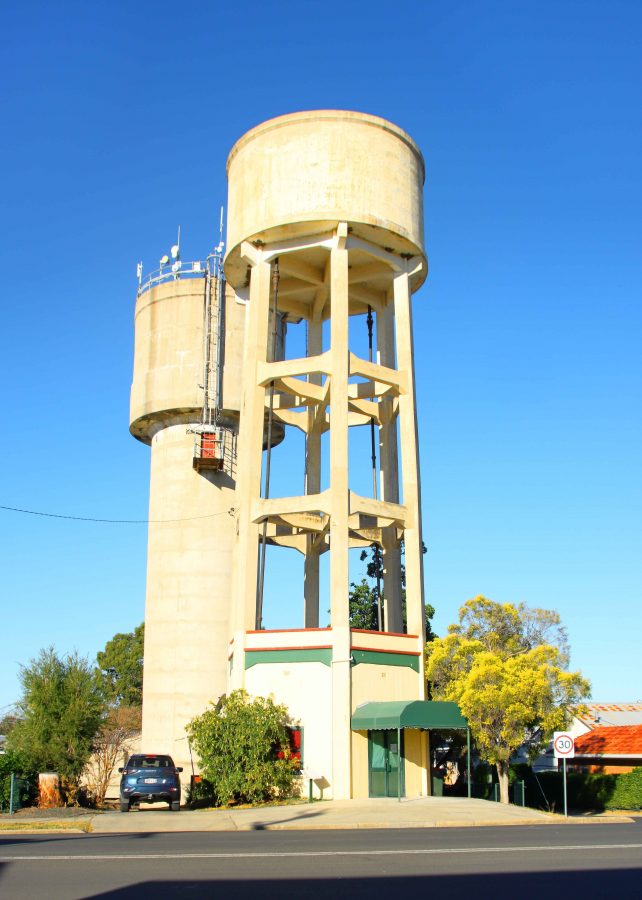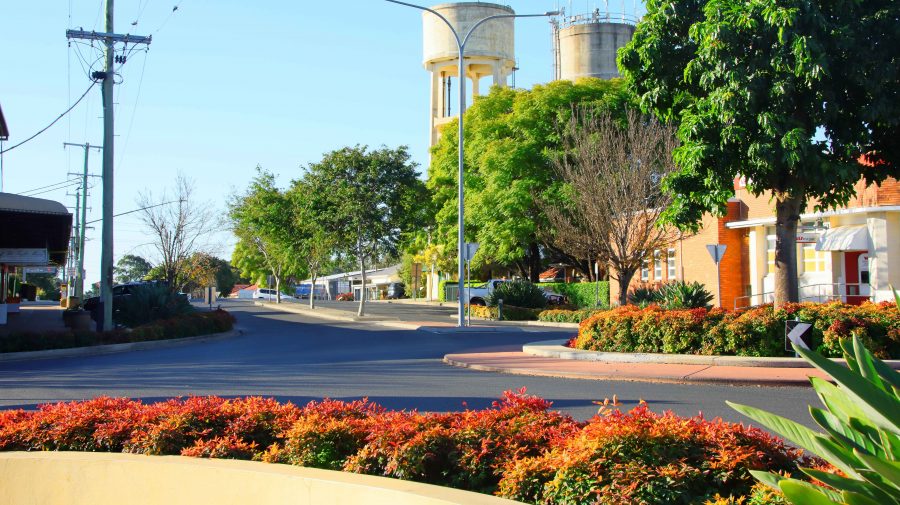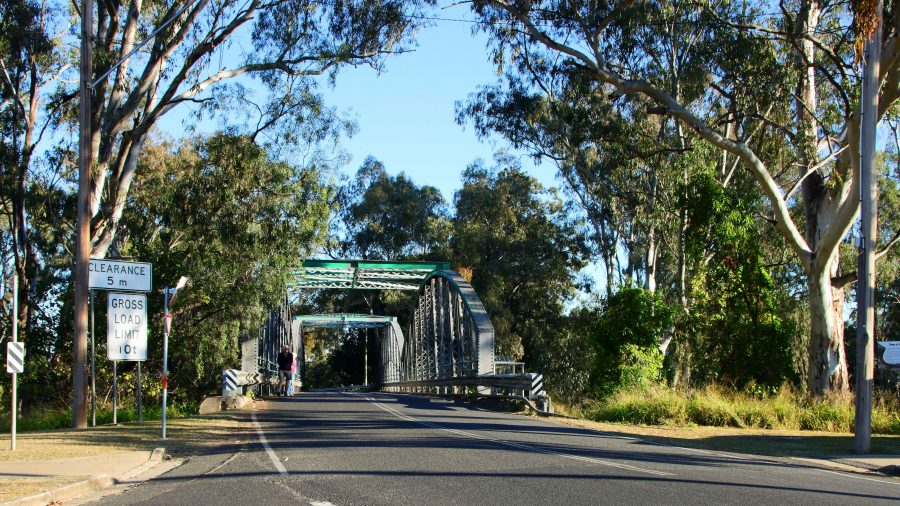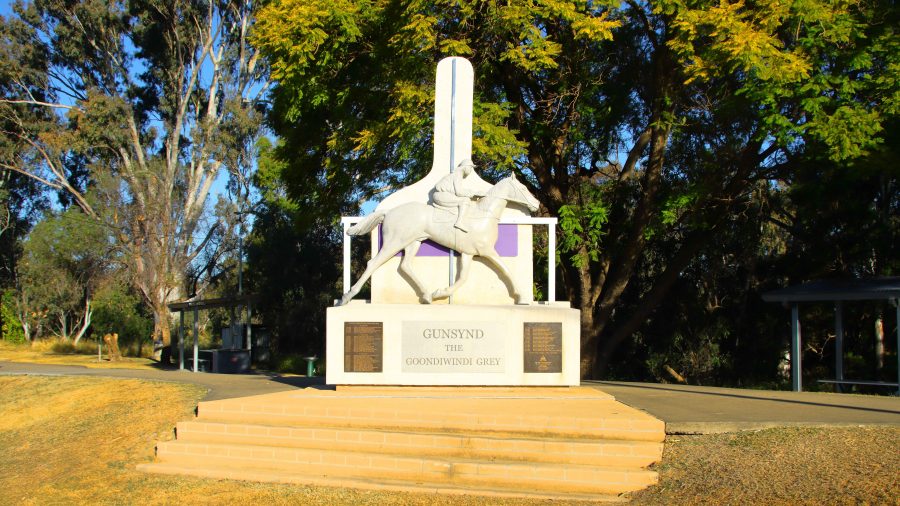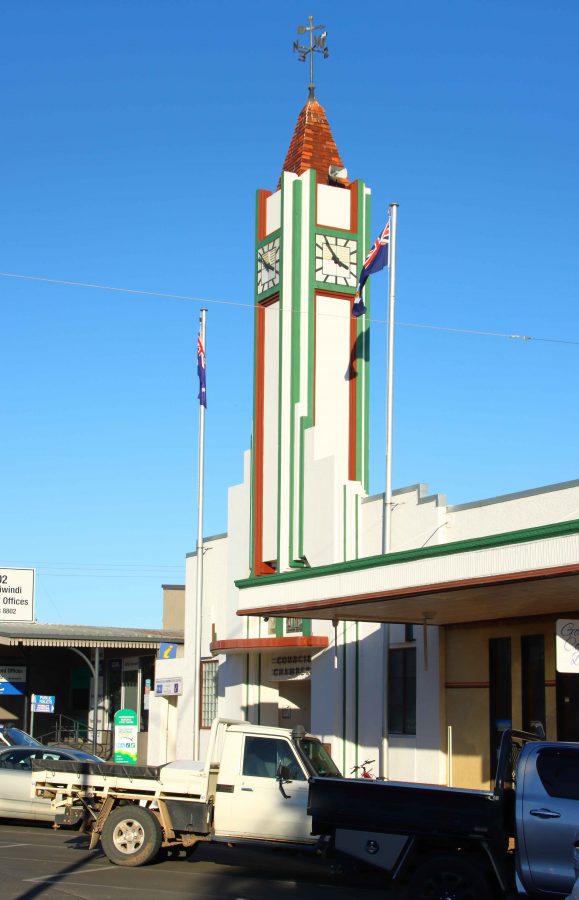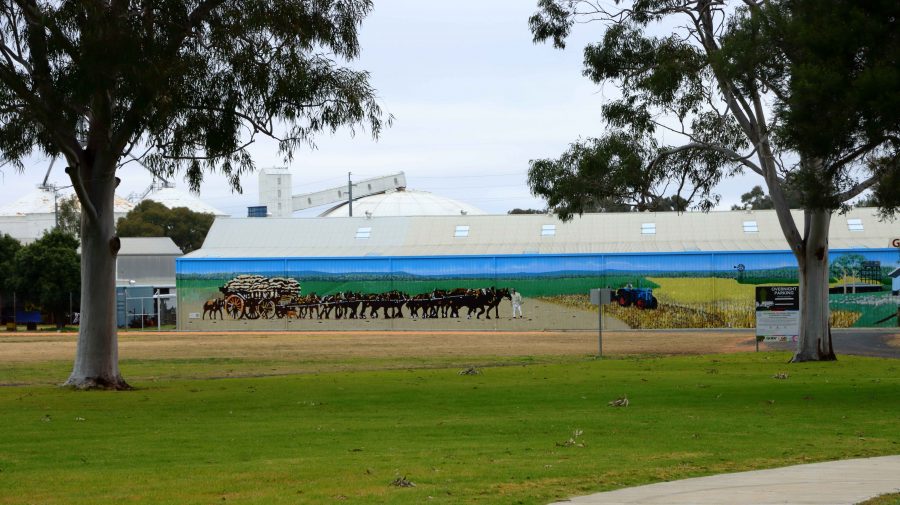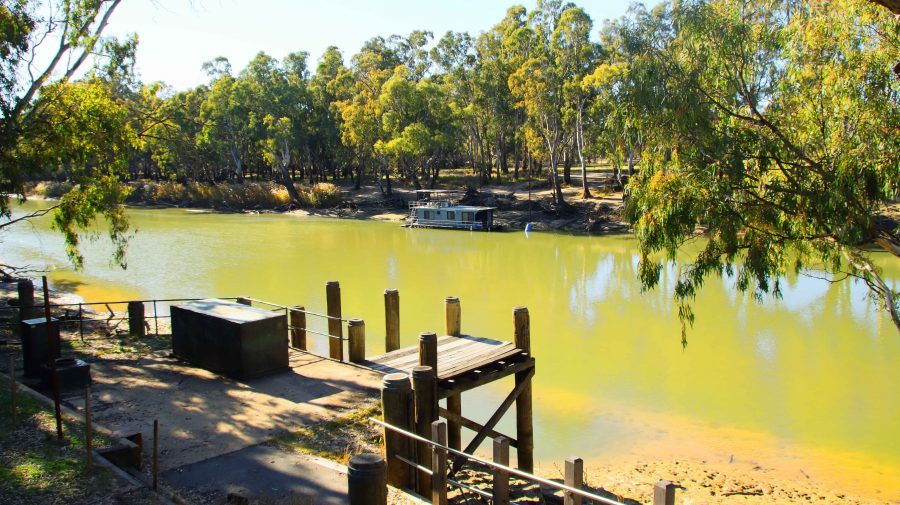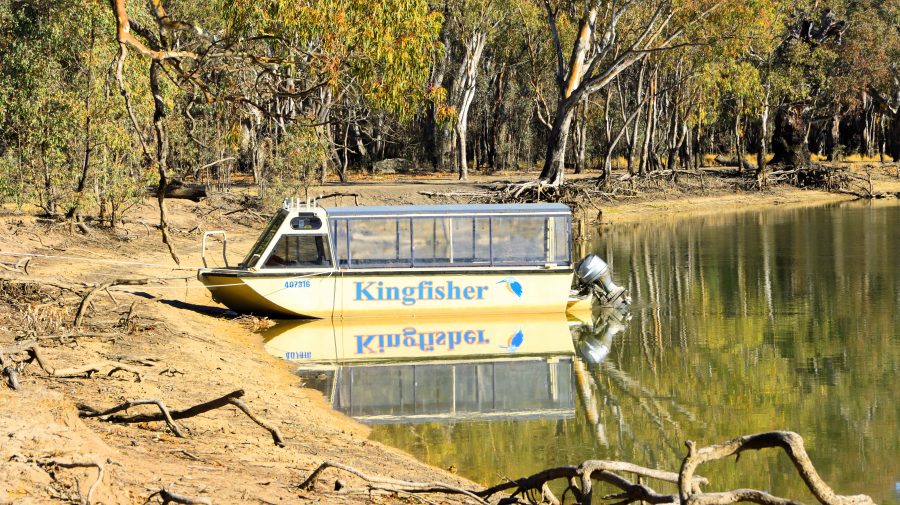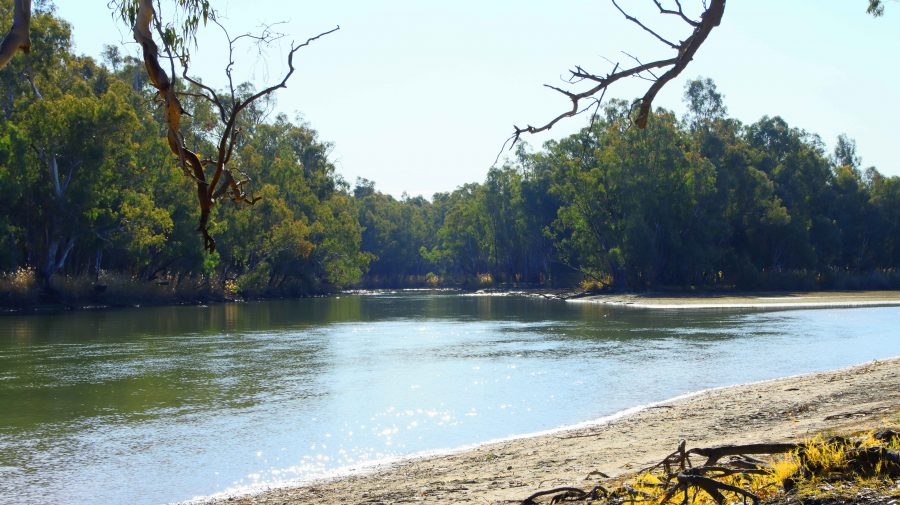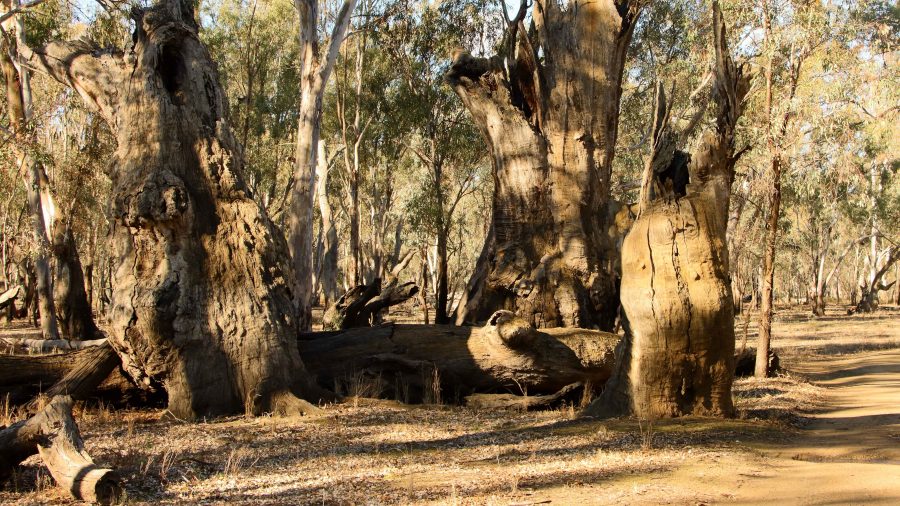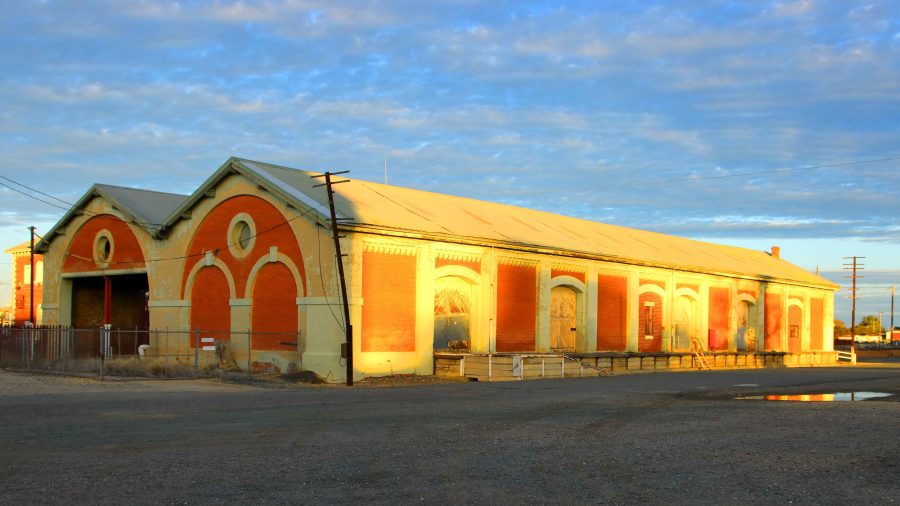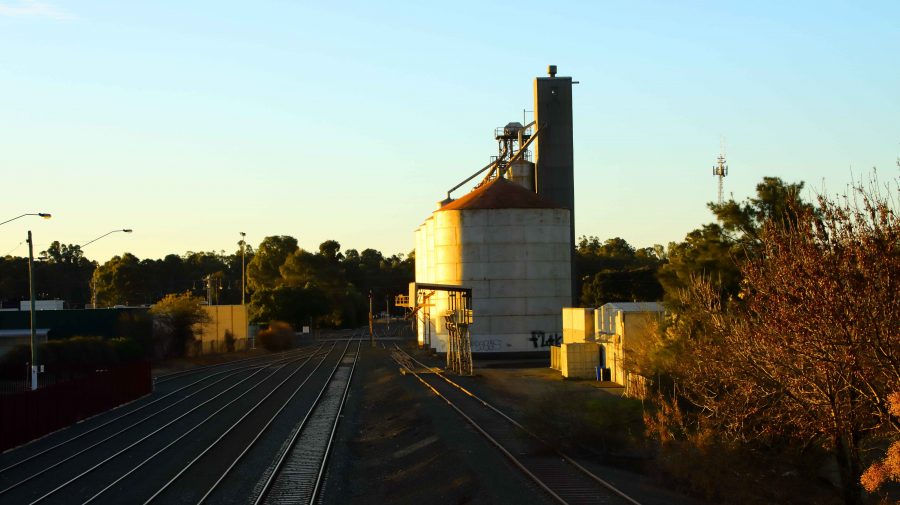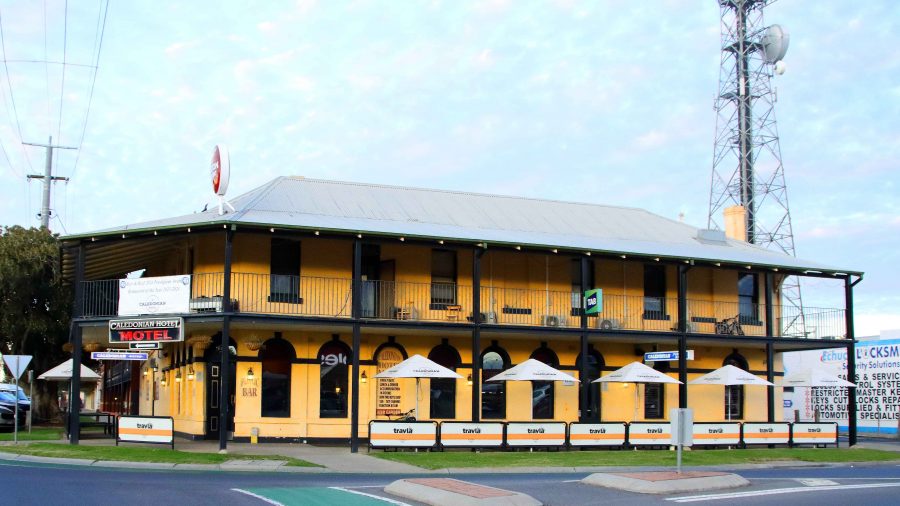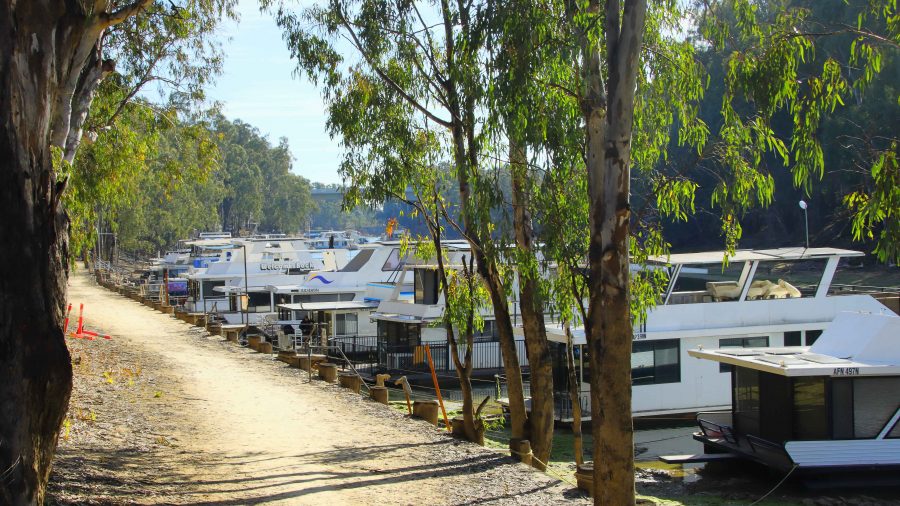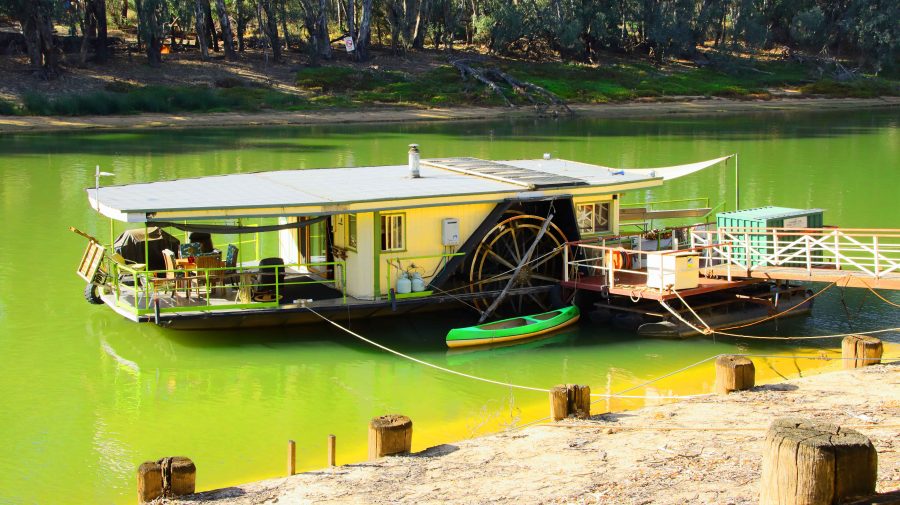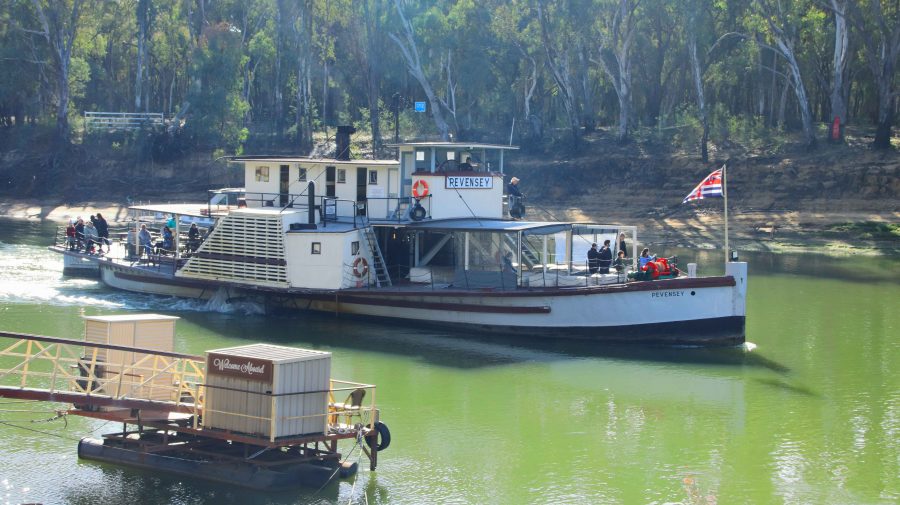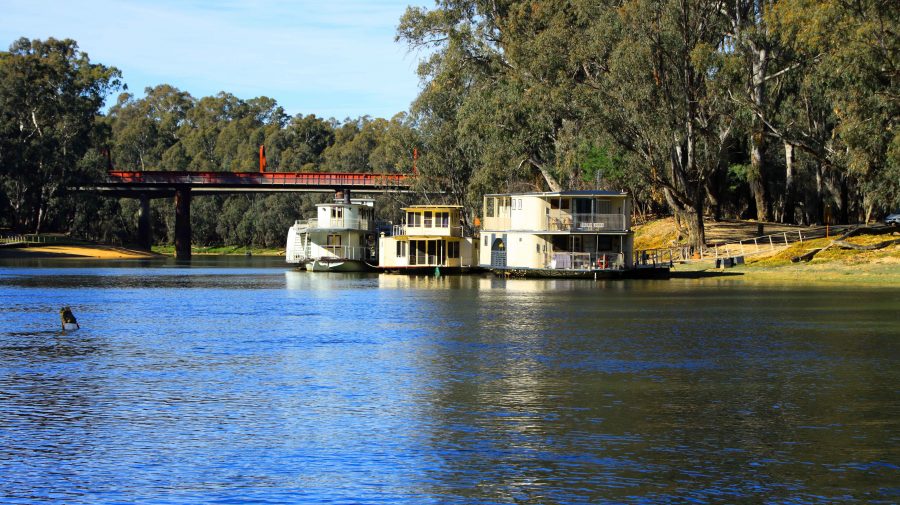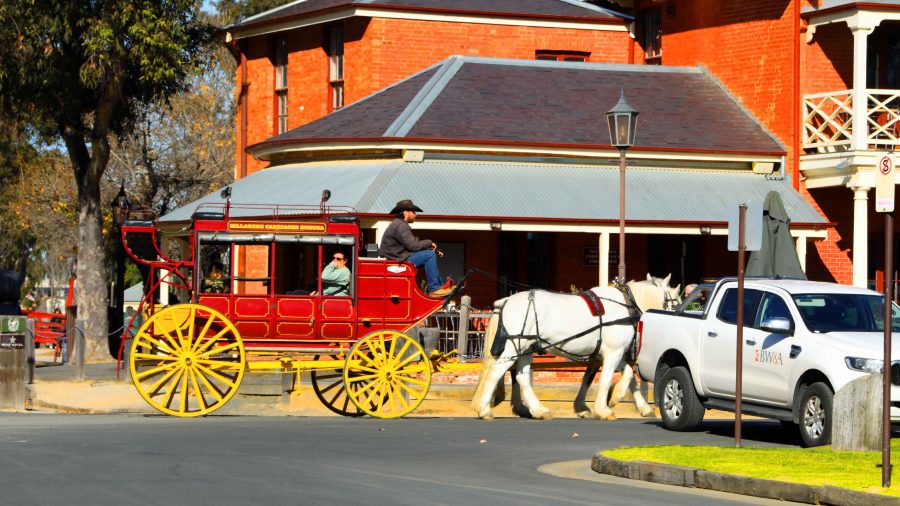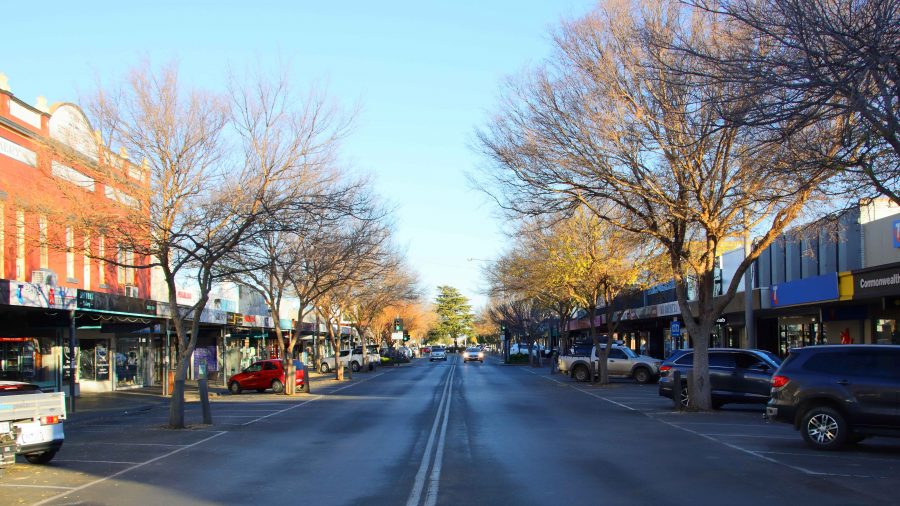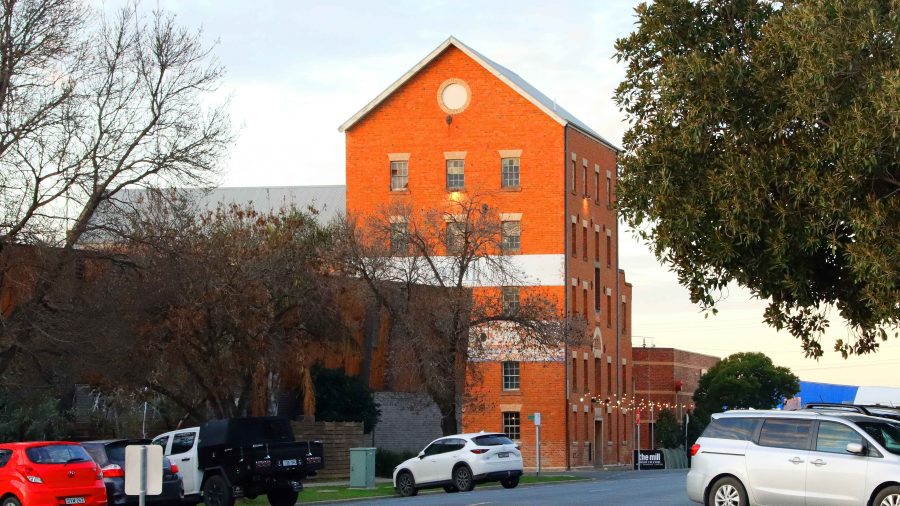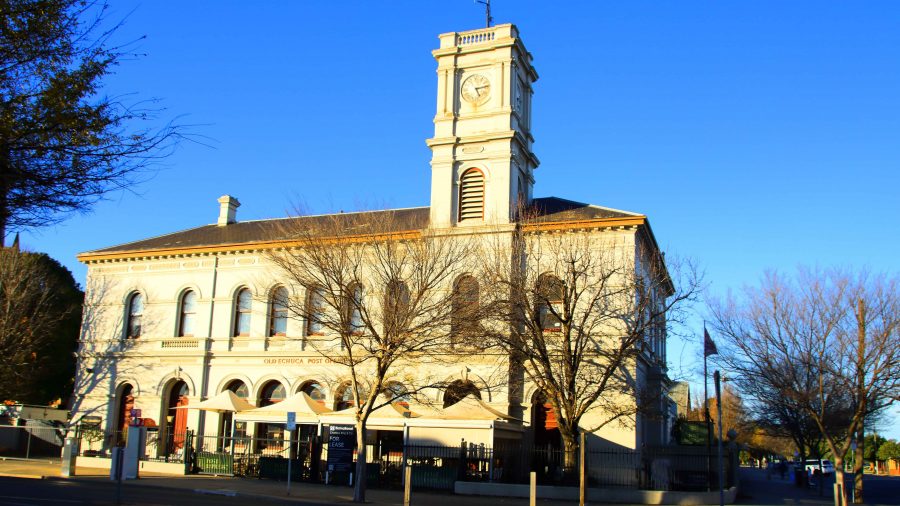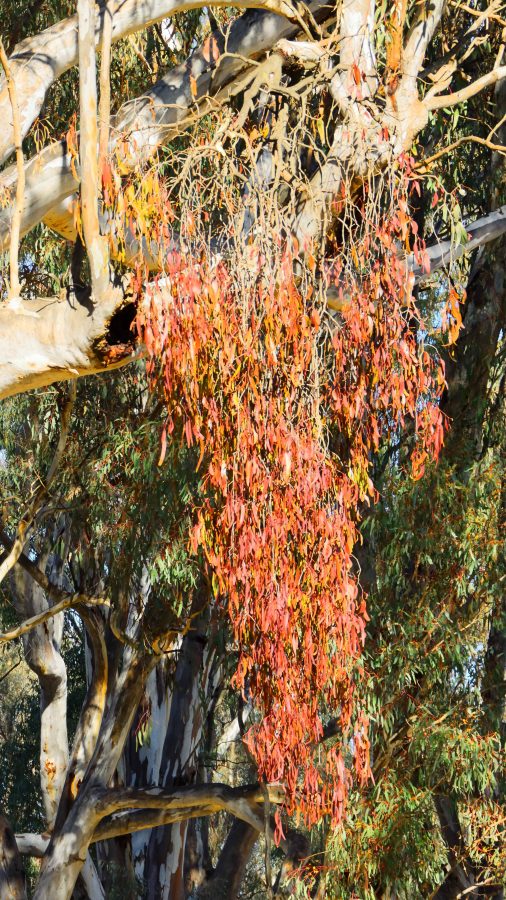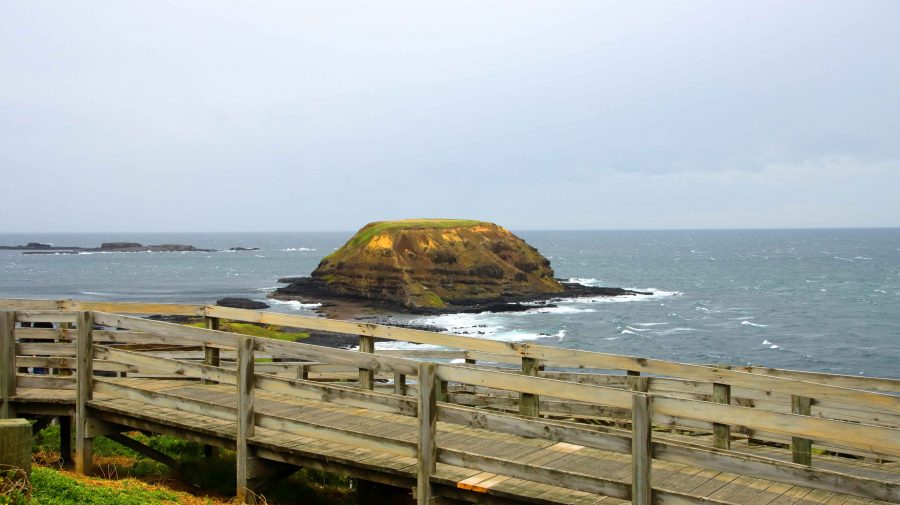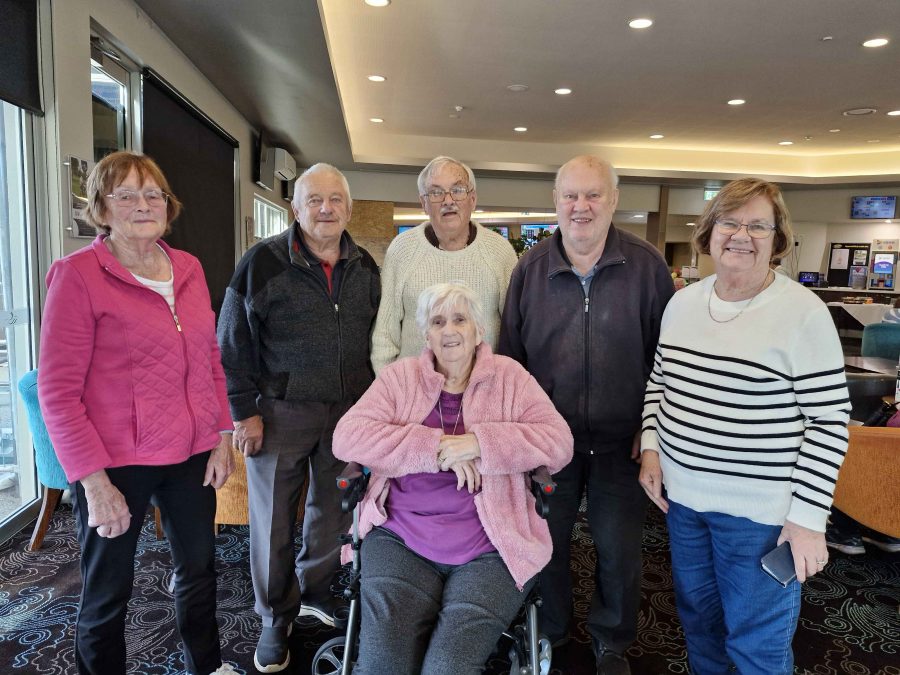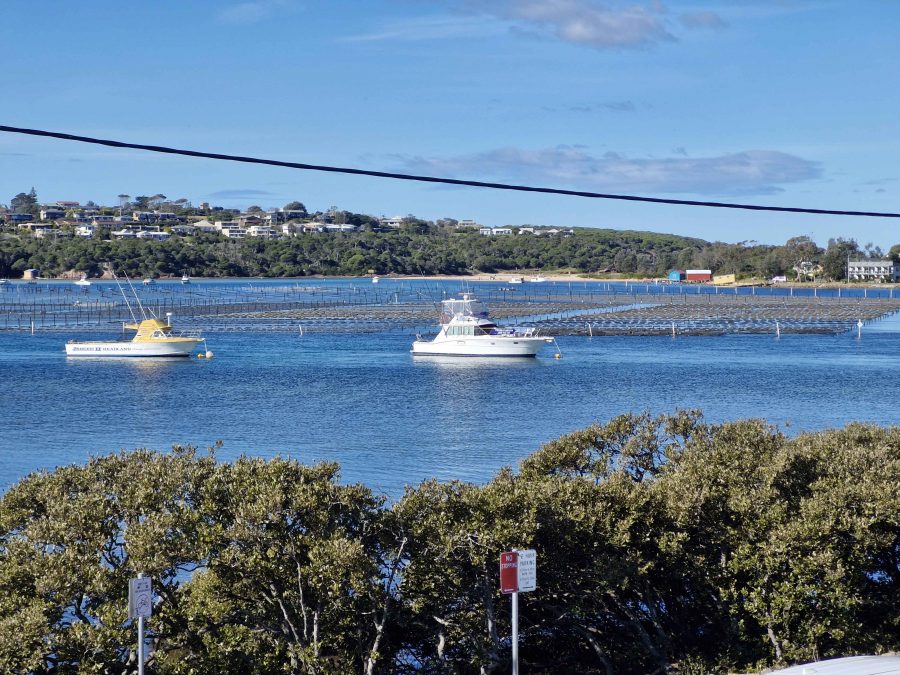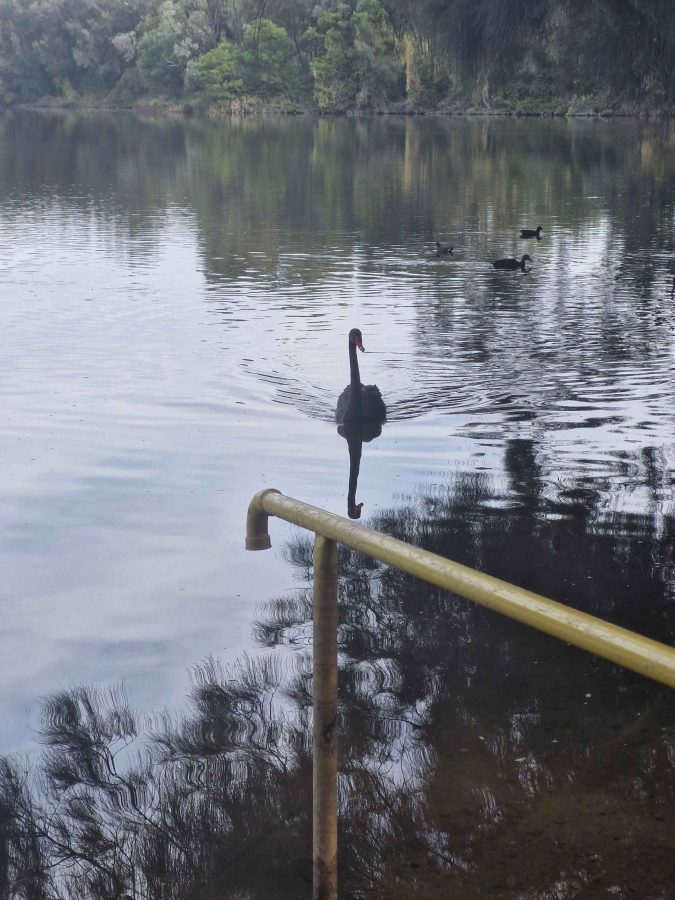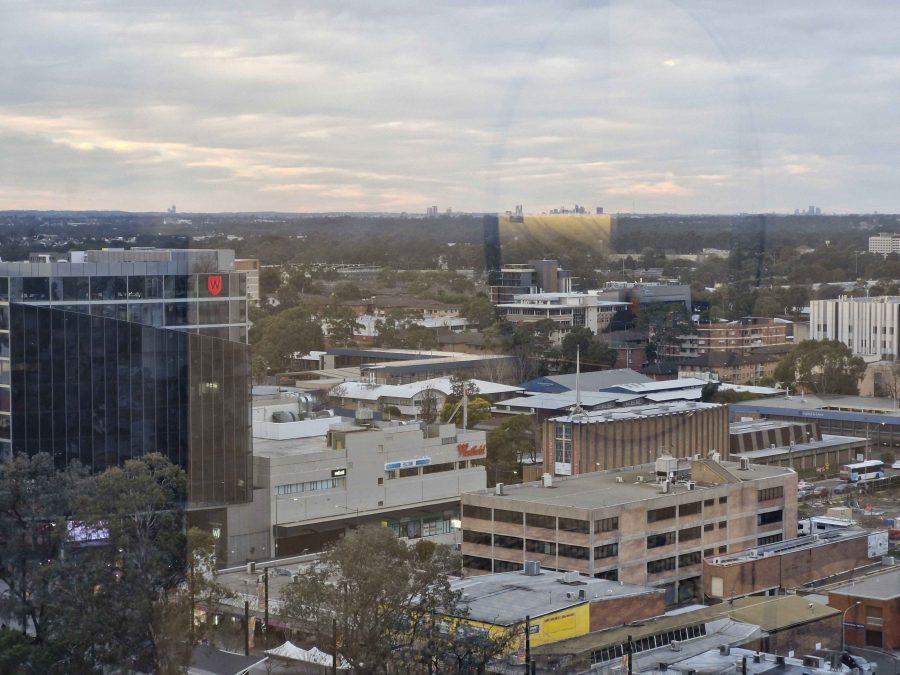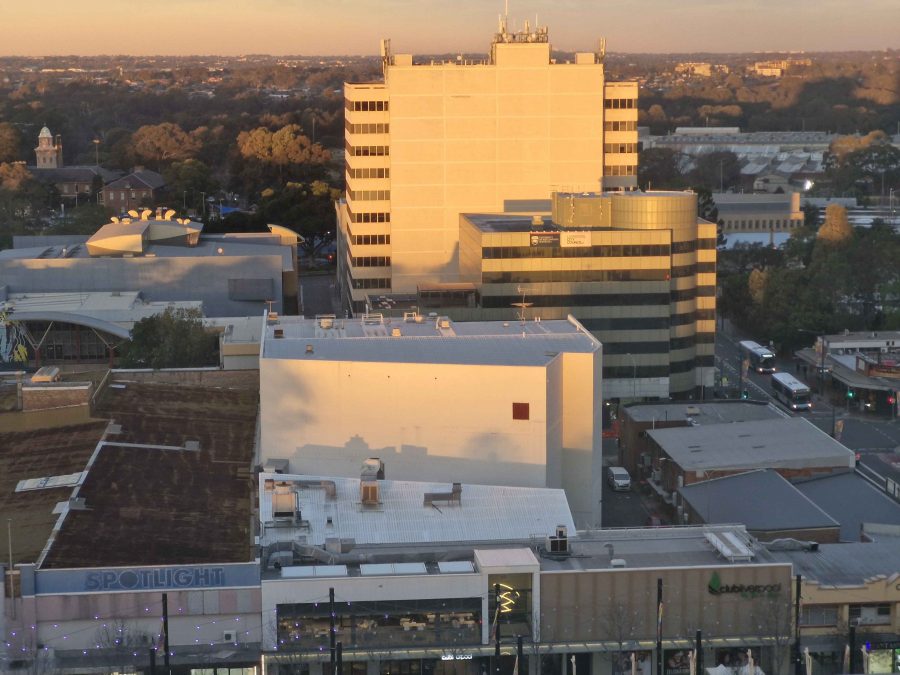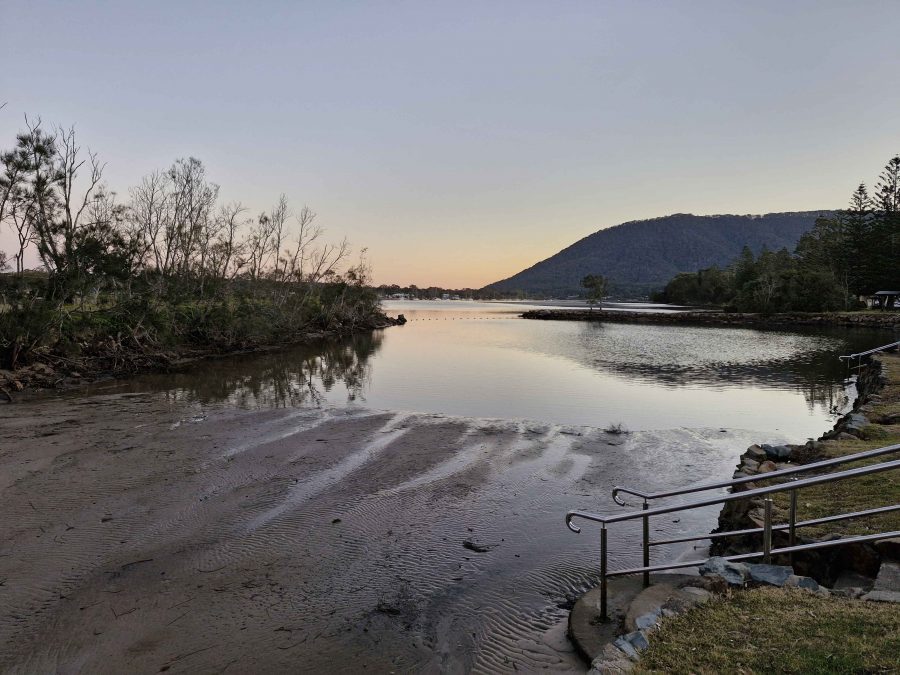In our caravanning days, one rule was that we avoided the south east of Australia during the colder months. Anywhere, south of Brisbane was out of bounds.
So our decision to visit my siblings in Gippsland was taken with much thought, but finally decided on reluctantly. We have been gone from being residents of Melbourne for more than forty years, so we do not like cold weather at all.
But my one and only sister has recently been moved into care and seemed to be making hard work of it, so we decided to make the trip south. For additional incentive our plans included a call on Ruth’s debilitated younger brother at Bowral in the NSW Southern Highlands and to catch up with our younger daughter in Sydney, but only for dinner.
We set off on 1st July via the Warrego Highway and the Toowoomba Bypass, stopping in for lunch at Millmerran. Shortly after getting back on the road, we were held up by a tourist having laid their caravan on its side on the shoulder of the road. Problem free from there on. The Gore Highway had been improved since we last used it. Busy too, with trucks and caravans, mostly going towards Toowoomba.
A mid-afternoon arrival at our Goondiwindi accommodation. The timing allowed me to do an afternoon walk with my camera, through the central town area and to explore the area near the Macintyre River. Goondiwindi is a substantial town with a population of around ten thousand people.
Day two was a run along the Newell Highway with the overnight stop at Coonabarabran. By the time that we booked into our motel the evening chill had set in, so I squibbed on a walk and stayed inside in the warm motel room instead.
As a concession to advancing age we had broken the trip into shorter daily distances. Our third night was at West Wyalong. We took a break in Gilgandra at the historic Coo-ee Heritage and Information Centre, built to commemorate the start of the famous World War 1 recruiting march that commenced in Gilgandra and concluded at the recruiting office in Sydney. Lunch at Parkes, shopping at Forbes and the night at West Wyalong.
Day four took us further along the Newell Highway until we reached Jerilderie, where we turned left to reach the Cobb Highway at Deniliquin. This town, famous for its annual Utility muster, is on the Edwards River, a tributary of the Murray. Here we were introduced to paddle wheel steamer country, with examples of these historic craft and shallow draft houseboats, moored to the bank or aground on the bank of the river.
With time in hand, we decided to turn into the Barmah National Park, a lake and flood plain area on the Murray, not far from Echuca. It was on our list to visit so the call today saved us returning the next day. It is only about 20 km off the Cobb Highway.
Barmah is a popular area and offers visitor facilities including a cruise boat for tours of the lake. Campers have ready access to a launching ramp near the camping ground and several hundred meters of shore at which boats can be moored. The entire public area is flood plain and evidence of flooding is everywhere. The forest is dotted with huge river gums, most still standing but some have succumbed to the rigors of nature and are slowly crumbling back to vegetable matter. It is worth a visit if you are in the area.
We reached the sizeable town of Moama, on the northern shore of the Murray, in good time and took the new concrete bridge, opened in 2024, over the river, to our hotel on the edge of the CBD. I had time for a camera walk before settling for the night. The evening light was very gentle on the historic buildings of the railway station where I took my walk.
On Saturday morning, day six, we set out initially to find the location of our cruise paddle wheeler. Boating activity is centered on the old port area where the famous high-level wharf, so often seen in photos of the port, is to be found. Two boats were providing paddle wheeler rides, PS Pevensey, which was operating from the old wharf, and PS Canberra that was working from a floating dock a little further down-stream. Both boats were using the same section of the river, virtually taking turns in using the narrow strip of river provided by the low water levels currently in the Murray. The Darling River has had a boost from rains in Queensland but the catchment area for the Murray has received much less rain. It will get a boost from snow melt at the end of winter.
Having located the boarding place, we then went to find the mouth where the Campaspe River joins the Murray. Sadly the road in was only passable to four-wheel drive vehicles. It was a bit too far to walk.
We returned to our unit for an early lunch, to make sure that we were in time for boarding at 1.15 PM. During our morning reconnoiter we had established that Ruth would not be able to board, due to the steep angle of the boarding ramp. So we found a parking space that overlooked the boarding area. That was the best that we could do. Mobility limits can be challenging and lead to disappointment at times.
The cruise lasted an hour. We proceeded up stream to look at the historic wharf structure from the water. Then we turned down stream to retrace our course and paddle our way for about three kilometres. The scenery was mainly exposed river banks and rows of houseboats. Renting a houseboats is one of the things that tourists do when they visit Echuca. But many boats are privately owned. Some of those were in use, with owners basking in the afternoon sun, sheltered from the wind by the banks of the river.
PS Canberra, pictured at the start of this blog, was launched in Mildura in 1913 as a single deck fishing boat. There was a change of ownership, a second deck added and she became a river cruise boat. Canberra was moved to Echuca in 1966 and has remained there ever since.
I shot video during the cruise. Here it is in edited form.
Rain came in over night and produced intermittent showers for the first hour or so of our trip south to Melbourne and then Warragul. Traffic increased as we approached Seymour and stayed with us much of the way to and beyond Melbourne. The rain did not follow us into Gippsland but the weather was cool for our arrival. We booked into our accommodation and called my sister and my brother to announce our arrival and make arrangements to meet the next day.
When away from home, conveniences that you take for granted are just not there. Our motel room was too small to spend much time with four adults in it, so we opted for lunch at a shopping centre where we could escape the cold wind, get coffee (tea for Bernard) and food and talk in some degree of comfort.
I should ad that we had been joined by my youngest brother Bernard, who lives on his farm outside of Drouin, and has done for most of his life. We had collected him in Drouin on our way through.
We had headed back towards Melbourne to the Westfield Fountain Gate centre at Narre Warren. This part of Melbourne we know well, but it is so changed. Ruth and I rented a flat near the railway station at Narre Warren about sixty years ago. It was our third home. Our move there had occurred as a consequence of me changing my job from Drouin to North Clayton. We had taken the first step towards becoming city dwellers.
We found a corner table in a food court. But it was a battle, as we were in the middle of Victorian school holidays. But we found shelter and sustenance, so had a good discussion before returning to Warragul and returning Aileen to her residence.
The next day we were joined by my sister-in-law Helen, widow of my younger brother Winston. I had four siblings, three brothers and a sister. Sister was youngest in the family. My elder and younger brothers passed away over recent years, as did my brother-in-law, leaving my only sister a widow.
We collected Aileen and drove to Bernard’s farm where we moved into his larger car. Helen met us along the way. She is like Bernard, a retiring farmer. By retiring I mean that they have both ceased dairy farming and now raise beef as they wind down their level of productive involvement. Even farmers have to give up work some time.

Our first stop for the day was San Remo. Talk about bleak weather. Even the life long Victorians were trying to avoid it. We gave up on fish and chips for lunch, got back into our cars and crossed the bridge into Phillip Island, continuing to Cowes, where we found a parking space in front of a suitable eating establishment. Phillip Island Coffee provided shelter, food and coffee. What more could we ask for?
There really isn’t much to do in Cowes on a cold winter day, but knowing how bleak it would be, we still drove out to The Nobbies and experienced the kind of weather that we had anticipated. Just a quick look and a couple of photos and we were back into the cars.
We took a longer way back to Warragul, following the Bass Highway to Wanthaggi where we stopped for coffee and comfort. We then followed the most logical way back to Ripplebrook, the location of Bernard’s farm. Then back to Warragul to deliver Aileen before returning to our motel and turning on the heater.
Wednesday was our last day. Ruth and I joined Aileen for very leisurely coffee at the coffee shop at her residence. We then moved on to The Warragul golf club restaurant where we met again with Helen and Bernard, plus a cousin, Kelvin Sheather, who also lives in the area.
We normally use the golf club for family catch ups and have been doing so for several years. It provides all the facilities that we need for lunch plus a lounge area where we can spend extended time in each other’s company. We went for a bit of a drive around the newer parts of Warragul before saying our farewells to my little sister.

Warragul has grown and matured since our departure. I know its streets intermittently because for about four years I tramped them once a month, reading gas metres, as part of my clerical employment, by first The Colonial Gas Association and later The Gas & Fuel Corporation of Victoria, after a company take over. The office is still there after about sixty five years but is now a coffee shop.
Thursday morning and time to head on back towards home. Catchups planned for Bowral, Sydney and Toronto.
We both felt a bit under the weather from the start. We had developed coughs and congested airways. We didn’t think we had the dreaded Covid, as part of checking into Aileen’s accommodation was facial recognition, including a temperature check. Neither of us had elevated temperatures. We stopped at Morwell for Strepsils to ease throats but continued on to Orbost for our first night. The weather was still very cold and windy.
Next morning, at Eden, we called at a pharmacy for something to suppress Ruth’s cough and came away with three medications. We stopped for lunch at Merimbula but then made a detour to Bermagui to see if we could spot a coastal rock feature known as the Horses Head. We could see no sign of it where I thought it to be, so we moved on to our motel at Moruya.
We were on full health watch as we were now to within twenty-four hours of our next family call, this one with the most critical health aspects attached. We continued up the coast to Wollongong before turning inland to spend the night at Picton, at a motel on the old Hume Highway. We stopped for lunch at Kiama, along with most of the tourists visiting the area south of Sydney that day. Or so it seemed.
During the evening we talked to our family at Bowral and decided that the risk of passing on our ailments was too great. That was a good decision, because on returning home Ruth was diagnosed with influenza, despite having had anti flu injections. Our daughter Briony took a pass on our dinner arrangement. She is busy at work and doesn’t need a dose of the flu.
Our Sydney accommodation at Liverpool had been booked and paid for, with a check in time of 2.00 PM. So we found a sunny spot in a park by the Georges River and sat and read. I did a short walk. Then we found a place for lunch and then booked in to our hotel. Our tenth floor room provided views att the way to the City of Sydney particularly as the sun set.
This brought us to Monday morning again, so we made our way through Sydney morning traffic to that strip of adventure known as the Pacific Highway to Newcastle. We were impressed by the progress made on the Raymond Terrace bypass.
Our stop was at Laurieton for the night. Chinese takeaway for dinner. We had planned a stop for the following night at Yamba, with a final run home the next day. But we decided to abandon the Yamba booking and drive through. We were again impressed with progress on the Coffs Harbor bypass. It is a bit hard to work out how much longer the construction will take, as so much of it can’t be seen from the existing road.
A clear run to home with only a modest delay on the Gateway Arterial. As we had travelled north the weather had improved, warmer and with less wind. After the first day with a soar throat, my symptoms had disappeared and I felt quite well. Not so Ruth, who coughed and slept her way home.
So, we arrived home on Tuesday and achieved a doctor appointment on Thursday. Ruth was diagnosed with influenza, right on the cusp of phenomena. But she responded well to antibiotics and is now back to near normal.
We felt the trip was worth while, despite the disappointments of the second half. But the experiences did teach us that Melbourne and Gippsland are not a good idea for us in Winter.

